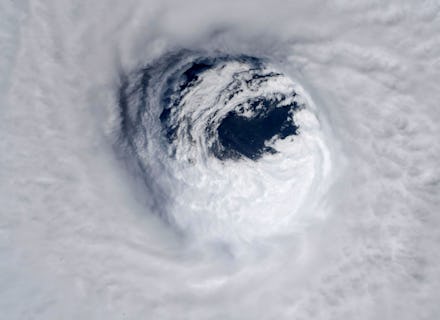What’s a stormquake? Scientists identify a new phenomena on the ocean floor

If you heard the term "stormquakes," you might think it's a spin-off series based on Sharknado. Unfortunately, it's far scarier than any cyclone filled with great whites, because stormquakes are actually real. In a paper published this week in Geophysical Research Letters, scientists highlighted the discovery of a strange phenomenon of storms that are so powerful and intense that they literally shake the ocean floor.
According to researchers, it's not uncommon for hurricanes to result in a low vibration that is enough to show up on seismometers — tools used to measure the intensity of ground motion caused by earthquakes, volcanoes and other explosions. But stormquakes mark a significant amplification of that tendency. Major weather events like hurricanes, Nor'easters, and winter storms typically produce massive waves on the surface level of the sea, but scientists found that the storms also produce other types of waves at greater depths, as well — sometimes all the way down to the seafloor. Those secondary waves carry a force with them that hammers against the seafloor and produces enough activity to create small quakes, considerably more than the standard vibration that has been picked up on in the past.
Those quakes can reach about 3.5 magnitude, which in the scheme of things is pretty minor. If it was an earthquake, 3.5 magnitude would be classified as a "light" quake — enough for people to feel it, but not enough to do anything more than some light damage. According to resources provided by Michigan Tech University, about 30,000 earthquakes with the same light classification happen each year. Given that, it's safe to say that you're never going to feel one of these stormquakes (unless you're hanging out on the ocean's floor for some reason). Researchers say they pose no real threat to people or anything happening on the surface. But they have occurred with a surprising amount of frequency without us ever really noticing. According to researchers, 14,077 stormquakes occurred between 2006 and 2015 — meaning there have been more than 1,000 of the events every single year.
What makes stormquakes particularly interesting is that, while they are caused by other storms taking place at the surface, the intensity isn't necessarily correlated. When Hurricane Sandy traveled through the Atlantic in 2012, it resulted in 223 deaths and $68 billion in damages — yet researchers say it didn't produce any stormquakes as it reached the shore of New Jersey, where researchers tracked its impact. Meanwhile, Hurricane Bill did significantly less damage as it touched the shores of New Jersey in 2009, but managed to generate about 300 stormquakes along the way. Researchers reason that the location and surrounding conditions play a major role in the potential resulting stormquakes that occur from a larger storm. You might never feel these stormquakes, but just know that the effect of a major storm isn't just happening at the surface level.